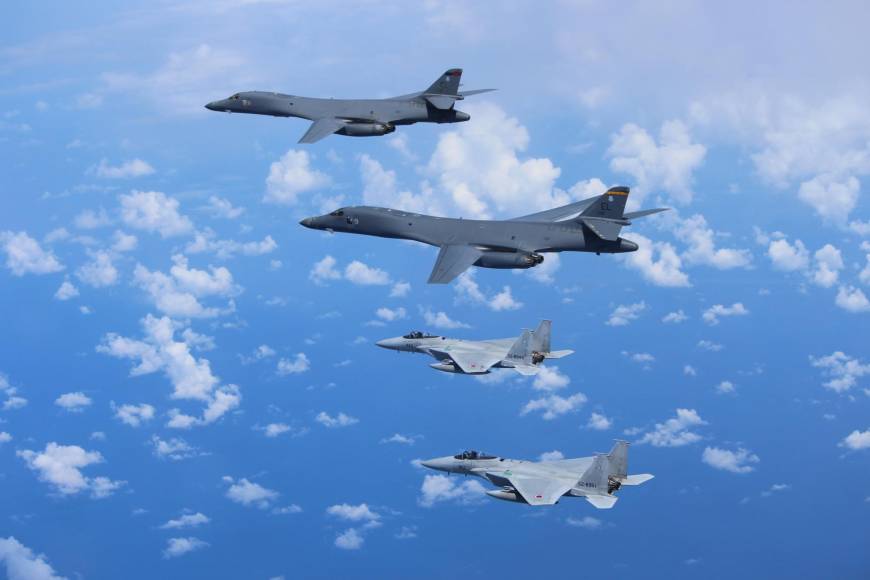The two B-1Bs from Andersen Air Force Base on Guam trained over the East China Sea with two ASDF F-15 fighters based in Naha, Okinawa Prefecture, the Defense Ministry said in a statement.
U.S. Pacific Air Forces spokeswoman Lt. Col. Lori Hodge said the mission “was not in response to any current event” and had been planned in advance.
“The purpose of this bilateral training is to foster increased interoperability between Japan and the U.S.,” Hodge said.
“Following the operation, one B-1B flew to Misawa Air Base to be a static display for the Misawa Air Festival, while the other B-1B returned to Andersen Air Force Base,” she added.
The flight by the B-1Bs was the first since North Korea conducted its sixth nuclear test, which it claimed was of a hydrogen bomb capable of being loaded onto an intercontinental ballistic missile.
The North called that test a “perfect success,” and the Yonhap news agency, quoting a senior U.S. official on condition of anonymity, reported late Friday that Washington believed the blast was likely of a hydrogen bomb.
“We’re still assessing that test,” the official was quoted as saying.
“I can say that so far there’s nothing inconsistent with the North Korean claim that this was a hydrogen bomb, but we don’t have a conclusive view on it yet,” the official said.
Seoul had said that Pyongyang would follow the nuclear test with another missile launch over the weekend.
The last reported incidence of the U.S. sending B-1Bs to the area came on Aug. 31, in a “direct response” to North Korea’s unprecedented launch over Japan of a missile designed to carry a nuclear weapon two days earlier.
In that exercise, the U.S. sent four F-35s — one of the military’s most advanced stealth fighter jets — to accompany two B-1Bs for a joint training drill with the ASDF over Kyushu airspace. The fighters and bombers later linked up over the Korean Peninsula with South Korean Air Force F-15Ks for a flight and bomb-dropping exercise simulating precision strikes against the North’s “core facilities,” according to the U.S. Pacific Command and South Korea’s Defense Ministry.
Overflights of the Korean Peninsula by heavy bombers such as the B-1B have incensed Pyongyang. The North views the joint exercises by what it calls “the air pirates of Guam” as a rehearsal for striking its leadership and has routinely lambasted them as “nuclear bomb-dropping drills.”
While not nuclear-capable, the B-1B — six of which are currently positioned in Guam, 3,360 km from North Korea — is regarded as the workhorse of the U.S. Air Force and has been modernized and updated in recent years.
The North said last month that it had drawn up plans to simultaneously launch four intermediate-range ballistic missiles into waters near Guam, with a flight plan that would see them fly over Shimane, Hiroshima and Kochi prefectures.
North Korean leader Kim Jong Un later backed off that threat, saying he would “watch a little more the foolish and stupid conduct” of the United States.
Washington formally requested a vote of the U.N. Security Council for Monday on proposed tough new sanctions against the reclusive country.
Source:japantimes.co.jp
